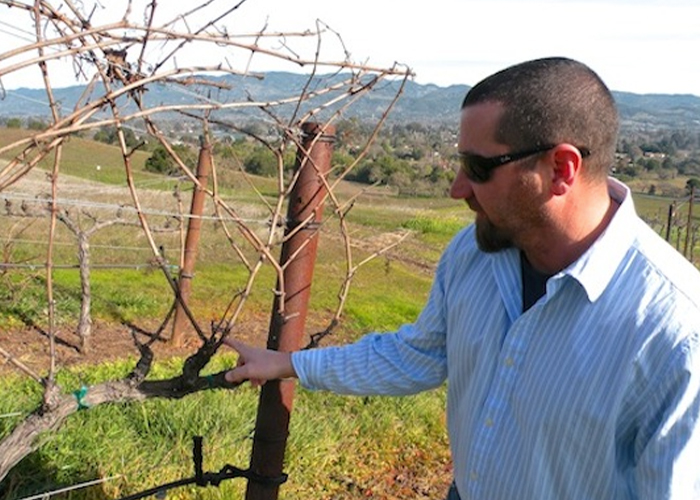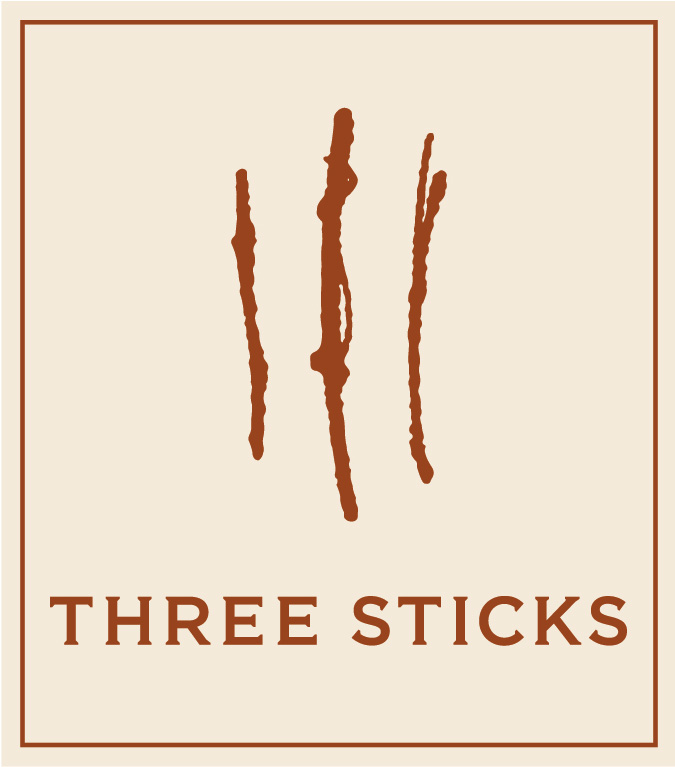Winter at Durell Vineyard: A Time of Contrast and Renewal

Wintertime at Durell Vineyard is a place of visual and physical contrast. Muted earth tones of pale Spanish moss cling in mass to the barren branches of deciduous oaks, all set against a backdrop of brilliant green grasses ripe from abundant winter rains. Geometric and dormant vine rows dissect both flat and undulating landscapes, roots held in check by frigid soils, while above ground busy crews prune canes in preparation for the coming bud break.
The sound track to this beautiful mosaic is also a work of contrast; the peacefulness of rural silence intermittently punctuated by the fleeting notes of songbirds, the barks of distant dogs, and the percussive snip of pruning sheers. Today, on this January morning, the sun is bright; the air is cool, yet warming.
We’re meeting with Rob Harris, Director of Vineyard Operations, to check on the status of Durell as the huge task of pruning begins. “Even though we’ve had a spell of fairly warm days, the nights have been near or below freezing,” explains Rob. “This keeps the soils cold and the roots dormant. This is what’s important to keep the vines in check. The earliest I’ve seen bud break here is mid-February. We like to see early- to mid-March to avoid frost issues in spring.”
The eastern vineyards of Durell are flat and rooted in rocky creek bottom soils, then rise to the west across sloping knolls and the steep hillsides of the Pacific Coastal Range. Rob says the lower vineyards can sometimes begin bud break three weeks earlier than the upper. With a crew of twelve to fifteen workers at a time pacing through vineyard blocks, we ask how he chooses where to prune and when, and does this affect the outcome of harvest.
“It’s a lot like life,” Rob shares, “there are no absolutes. When we prune, it does affect the timing of bud break – the earlier a cane is pruned the earlier it breaks bud. And we want to keep the upper and lower vineyard blocks somewhat close on timing, but not too close, otherwise all our fruit would come in at once at harvest, and that’s unmanageable.”
So this notion that winter is a time of dormancy in the vineyards is just not quite true – it is, but it isn’t. What the vineyard team does now extends all the way into the drama and passions of harvest. Below we share a series of photos with captions to illustrate some of the other tasks and farming decisions that are made in these short and sometimes stormy days of winter.
Hey, Rob, thanks for the tour!
The cut canes from pruning are dropped between the vines rows to be mulched to add natural nutrients back into the vineyard soils
Cleaning raptor boxes, erosion control, creek restoration, and fixing irrigation lines and fencing, are just some of the projects that occupy winter at Durell Vineyard
Cover crops such as annual legumes, e.g. fava beans, and crimson clover are utilized to enhance biological diversity, improve soil fertility and structure
Managing vast sections of open space at Durell supports natural habitat and biodiversity


